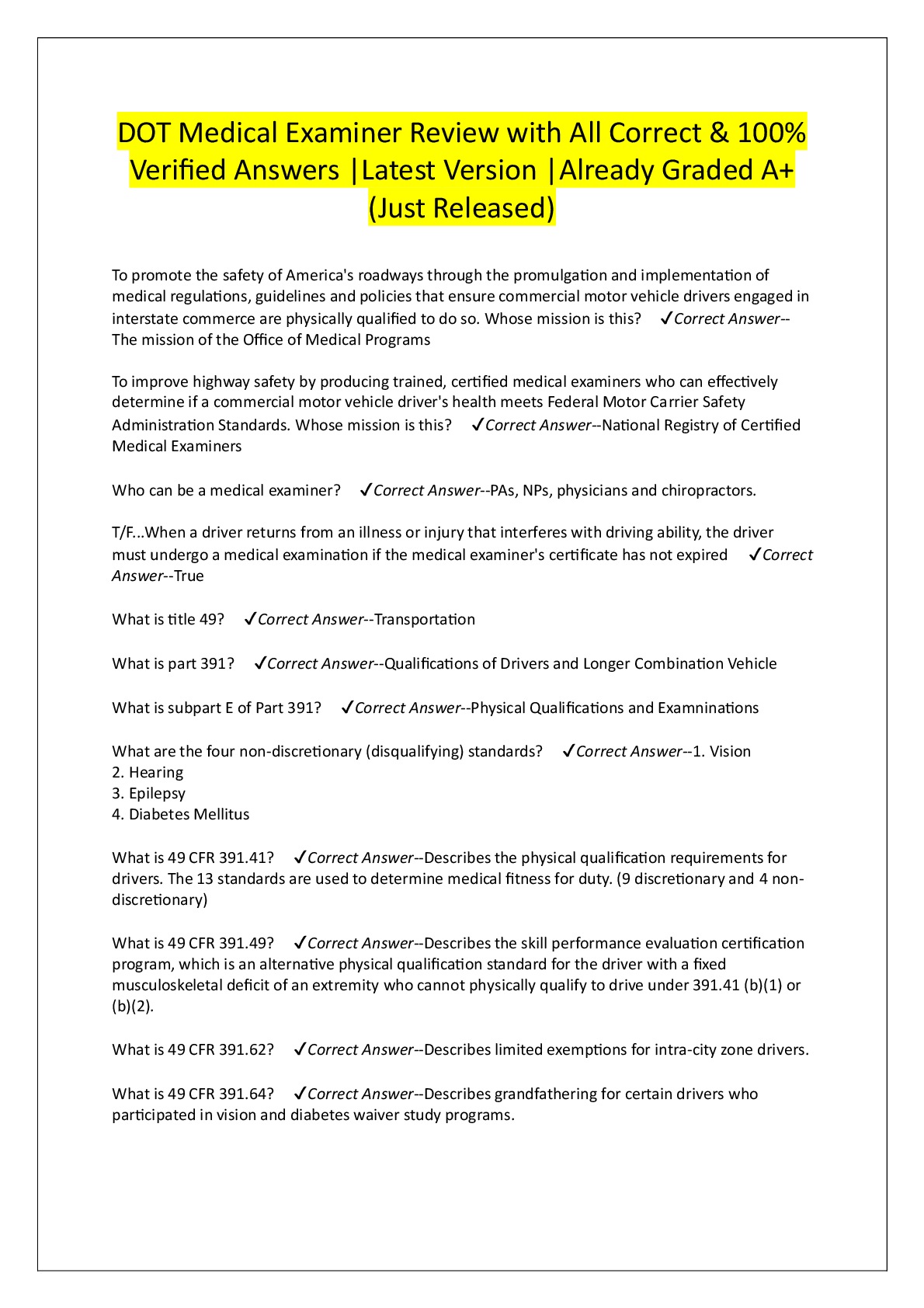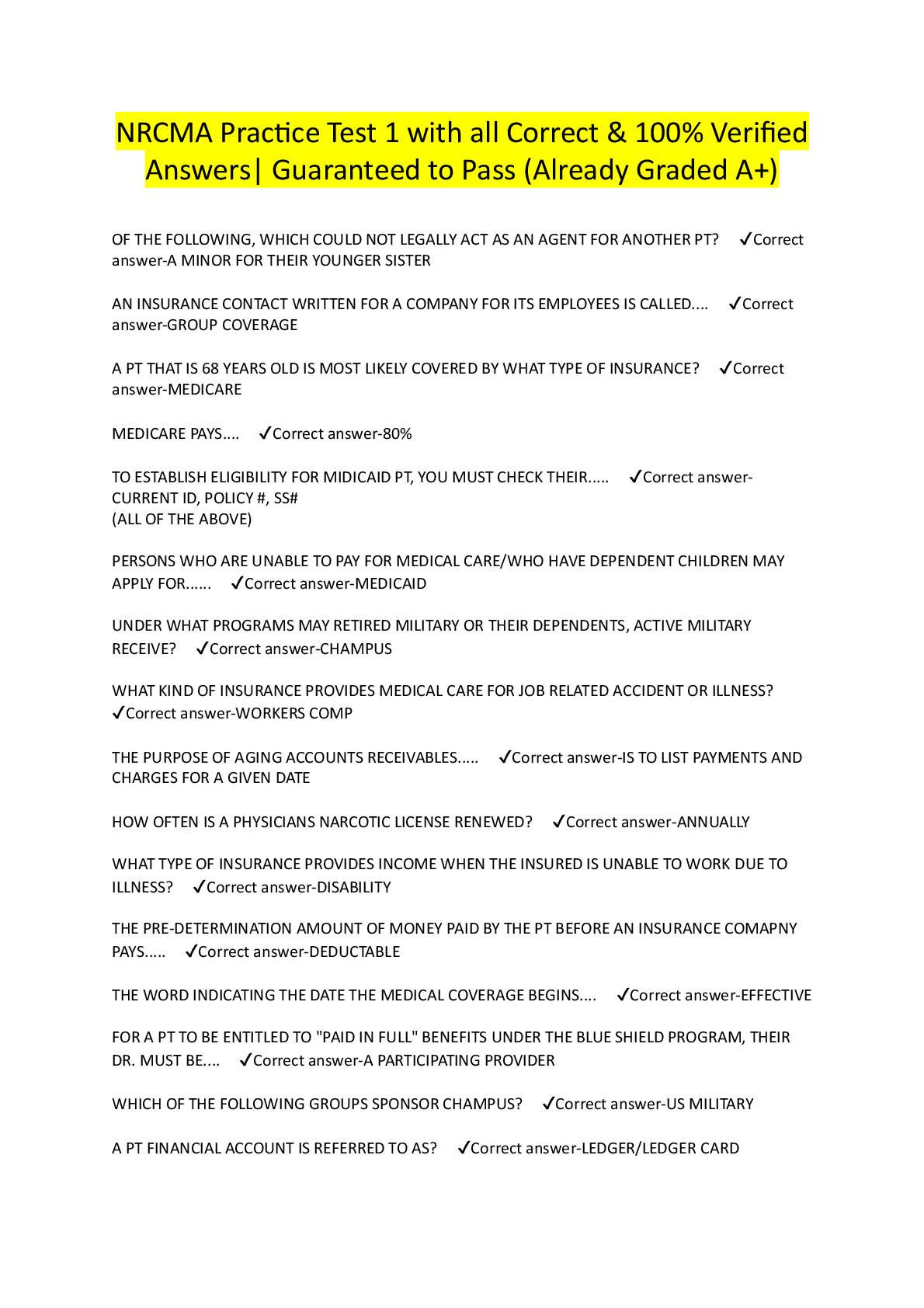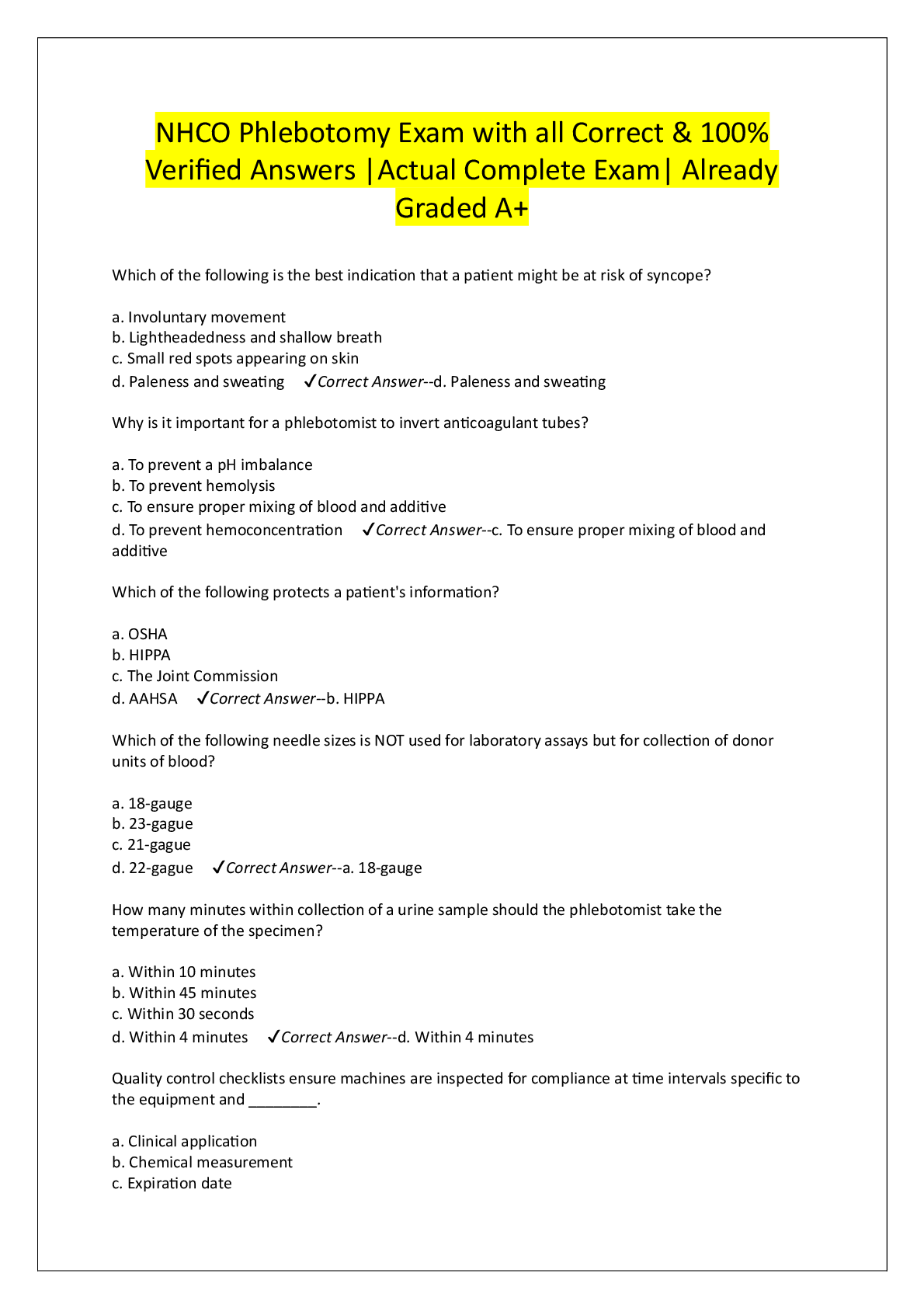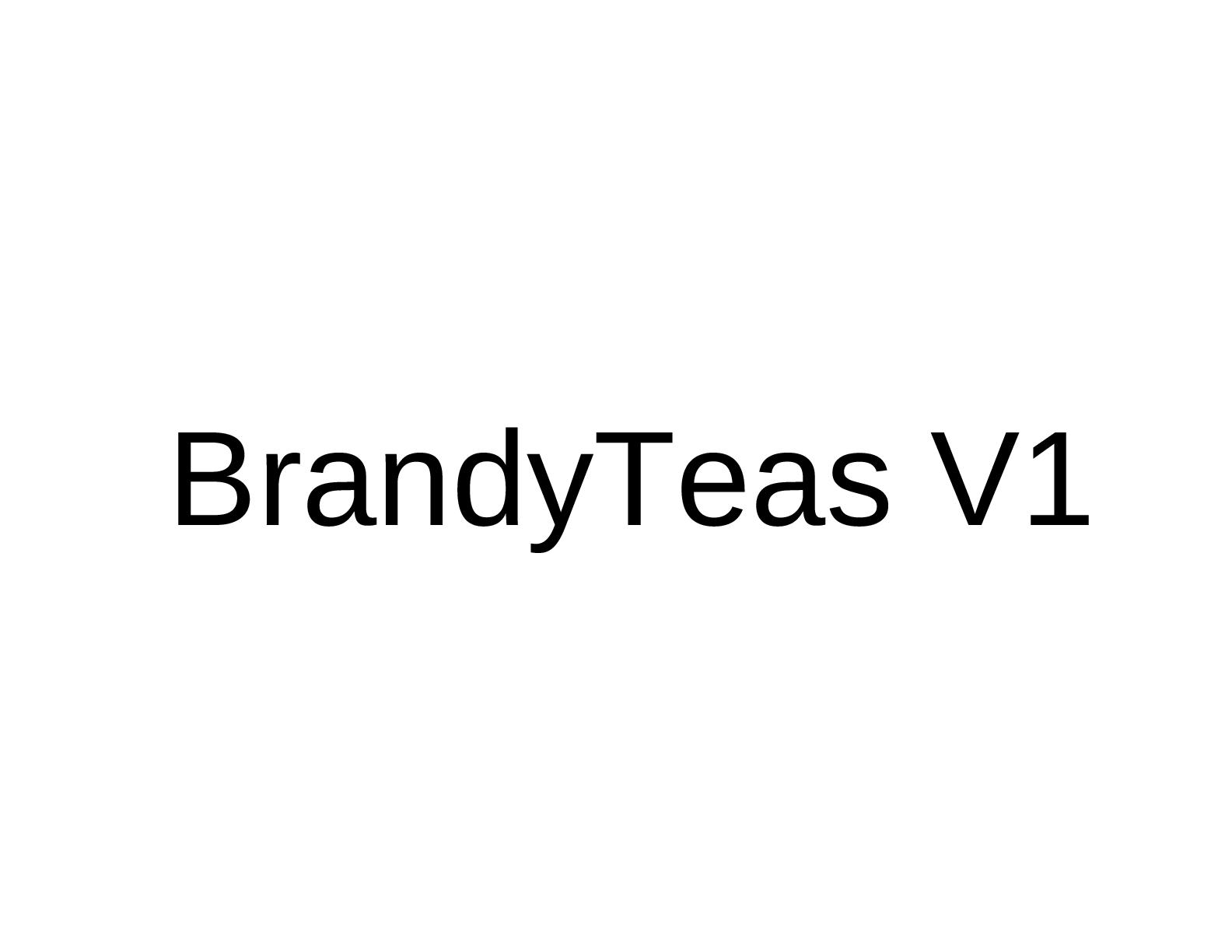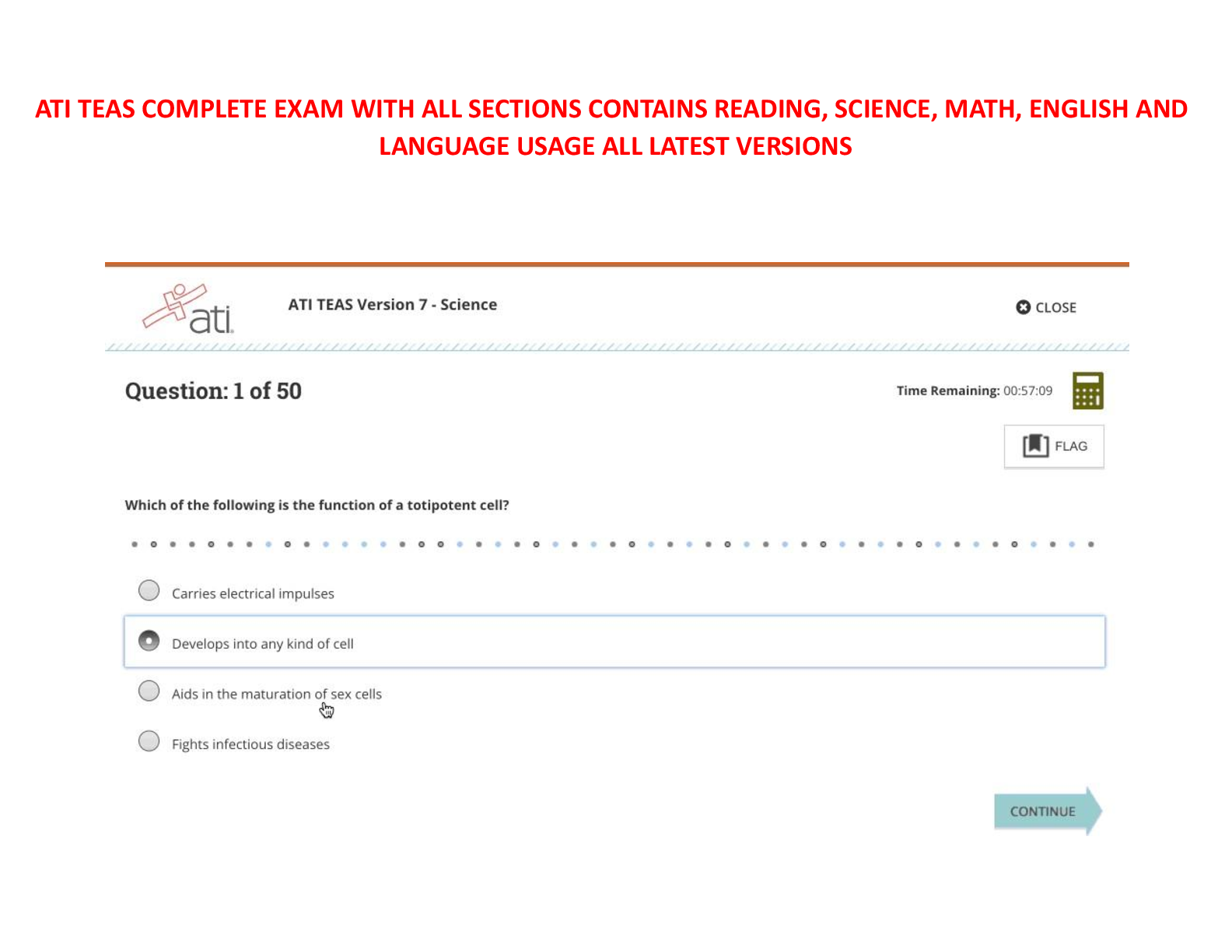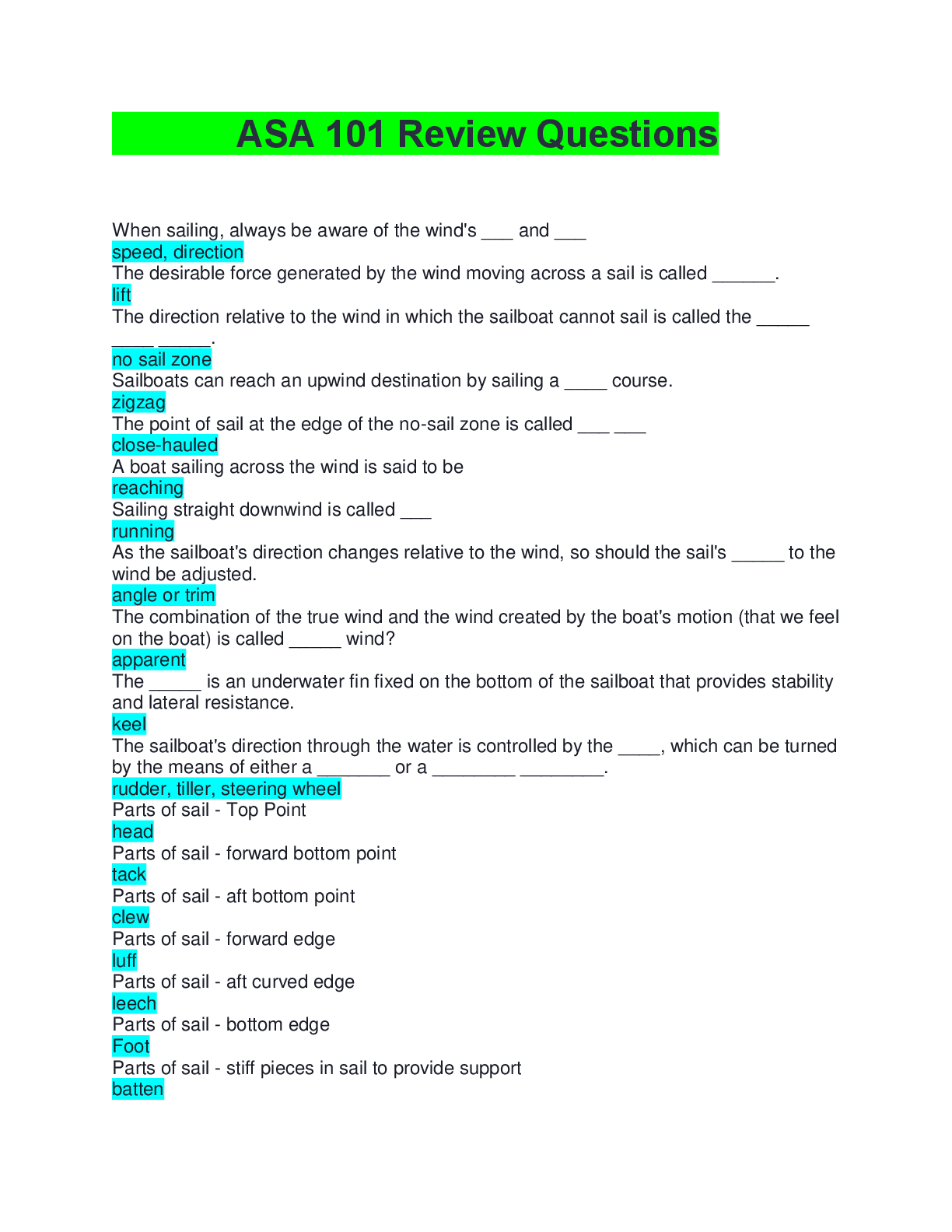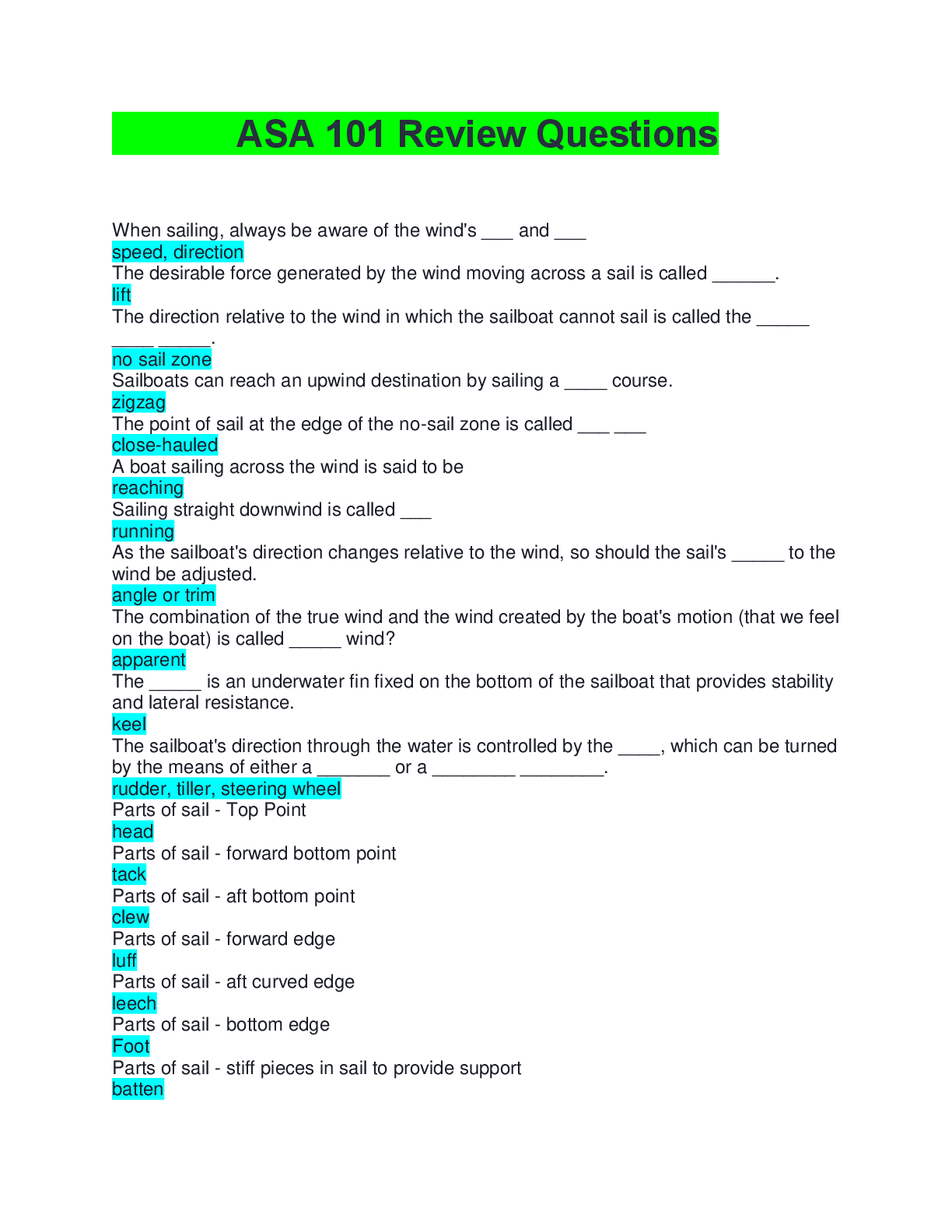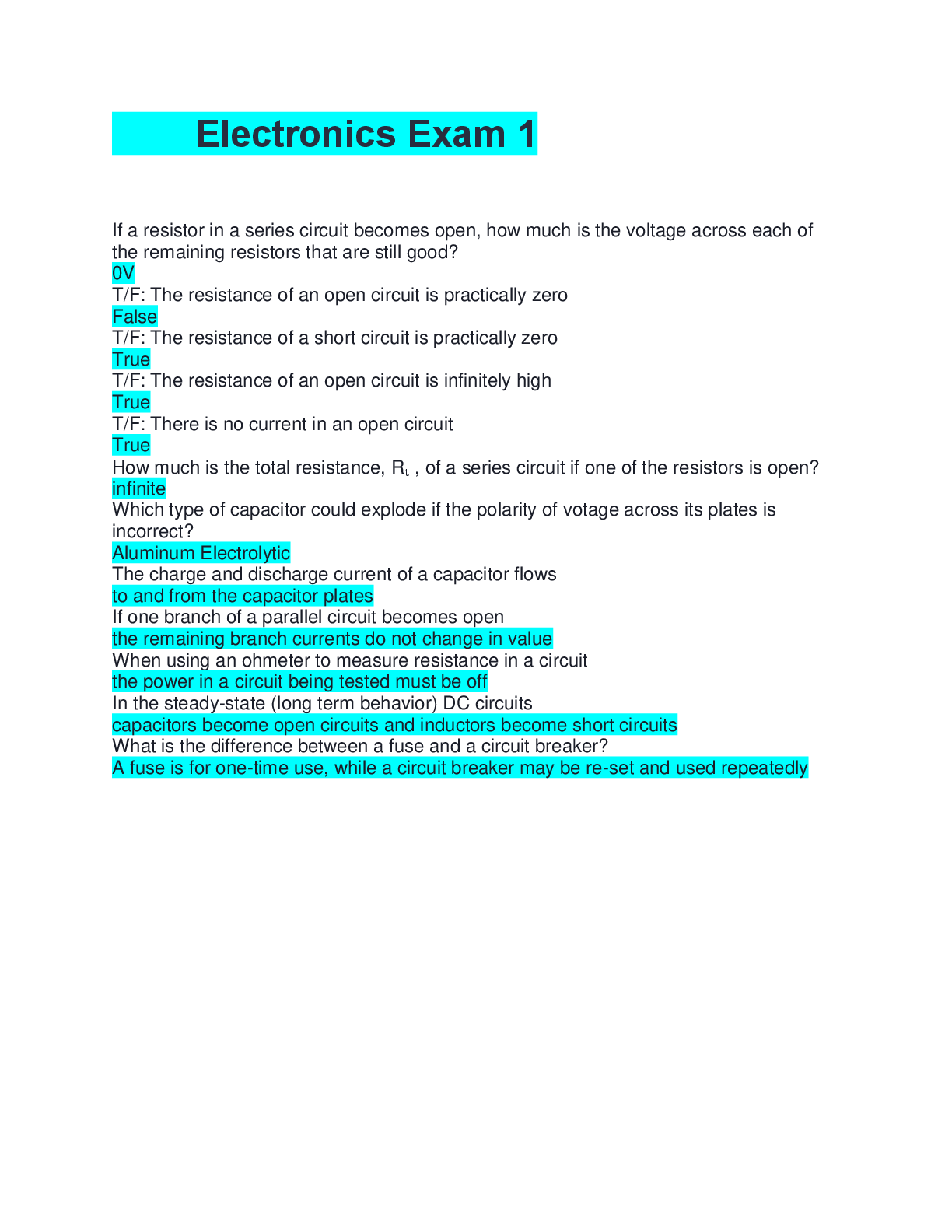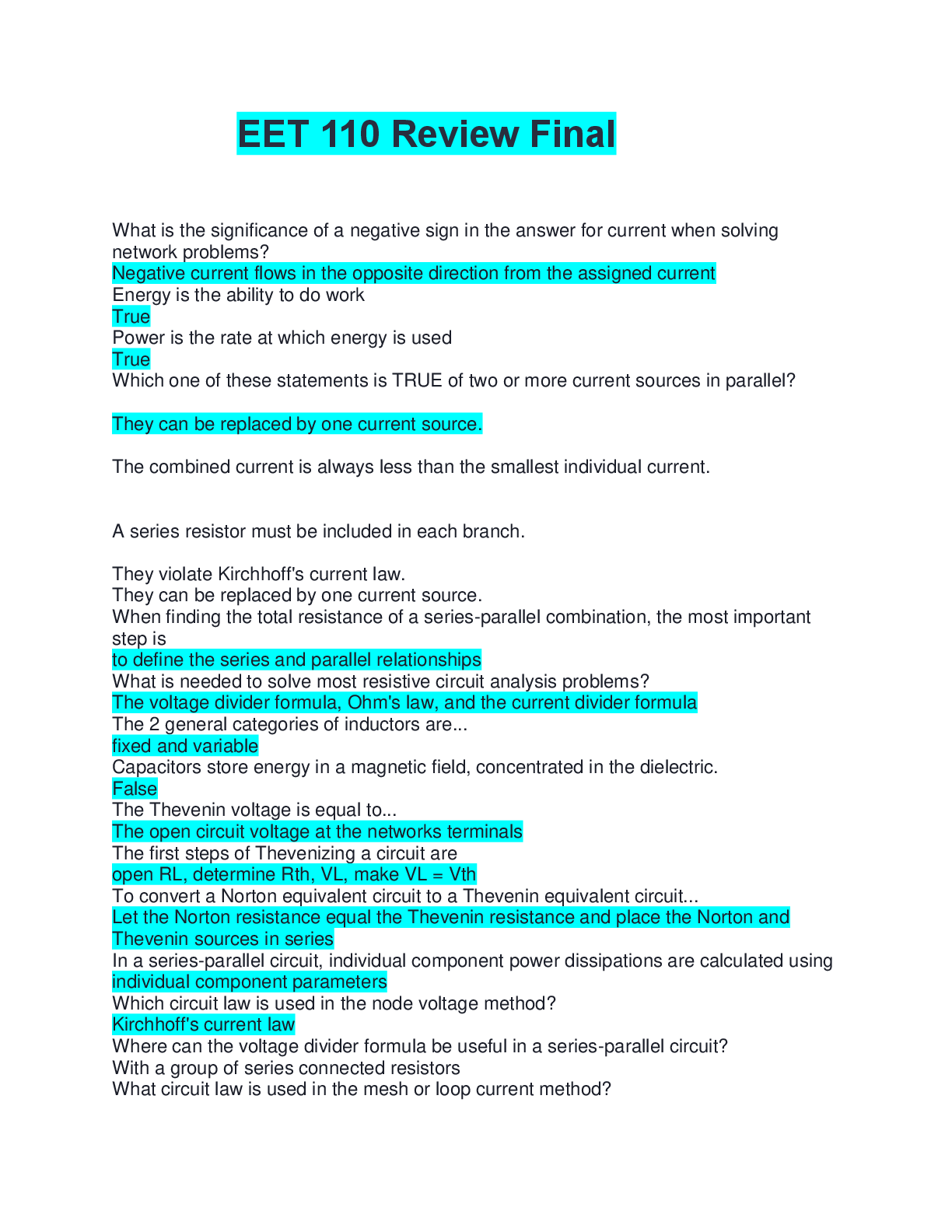History > EXAM > Strayer University - HIST 105 US History II UNIT 1 CHALLENGE 3 QUESTION AND ANSWERS_100% CORRECT, (All)
Strayer University - HIST 105 US History II UNIT 1 CHALLENGE 3 QUESTION AND ANSWERS_100% CORRECT,
Document Content and Description Below
US History II UNIT 1 CHALLENGE 3 HIST 105 US History II UNIT 1 CHALLENGE 3: The Era of Industrialization: 1877-1900 John works for a business that owns the majority of stock in several compani ... es in the food, manufacturing and real estate industries. John’s job is not to produce a product, but to manage these investments. What term best describes the business John works for? a.) Holding company b.) Monopoly c.) Bureau d.) Trust A meat packing plant slaughters cattle for meat. As the company expands, it begins to raise cattle and also develops refrigerated railroad cars to transport the meat to wholesale markets in larger cities. What aspect of industrialization does this represent? a.) Horizontal integration b.) Vertical integration c.) Holding company d.) Stock During the 1880s, Standard Oil owned or controlled nearly all facets of oil refining. When a company has such control over the marketplace, what term best describes it? a.) Trust b.) Holding company c.) Pool d.) Monopoly Which statement best reflects rural consumption practices in the late 19th century? a.) “I am concerned that any large purchase I make from this company's catalog does not come with a guarantee.” b.) “General stores still provide most of the rural customers' needs.” c.) “I need a sewing machine to repair all of the family's clothes, but I cannot afford it and cannot get any credit." d.) “We can purchase goods through mail-order catalogs for far less money than we would pay locally.” Which statement best reflects rural consumption practices in the late 19th century? a.) “General stores still provide most of the rural customers' needs.” b.) “We are frustrated that we can no longer consume the same goods that city folks have access to.” c.) “My aunt ordered a sewing machine from a catalog and paid much less than in the past.” d.) "I don't trust Sears, Roebuck & Company as much as I trust my local shopkeeper." Match the statement below with its most likely speaker from the Gilded Age. “I wrote novels in which characters succeeded in business despite their poor beginnings.” a.) Herbert Spencer b.) William Graham Sumner c.) Mark Twain d.) Horatio Alger Match the statement below with its most likely speaker from the Gilded Age. “When giving to charity, we must only help those who are willing to help themselves." a.) Andrew Carnegie b.) Horatio Alger c.) William Graham Sumner d.) Lewis Hine Two national labor unions emerged during the late 19th century: the Knights of Labor and the American Federation of Labor. Which statement is true of both the Knights of Labor and the American Federation of Labor? a.) They included equal pay for women in their platform. b.) They welcomed Native American workers into their union. c.) They were a merging of 20 craft unions that joined together in 1886. d.) They encountered anti-union tactics by employers. Consider this image of the Haymarket Affair published in Harper’s Weekly in 1886. The caption reads, “The Anarchist Riot in Chicago - a Dynamite Bomb Exploding Among the Police.” What group of people does this image show in the most positive manner? a.) Immigrants b.) Police officers c.) Labor organizers d.) Government officials Read the excerpt from a letter written by Albert Parsons after the Haymarket Riot. "There was no evidence that any one of the eight doomed men knew of, or advised, or abetted the Haymarket tragedy. But what does that matter? The privileged class demands a victim, and we are offered a sacrifice to appease the hungry yells of an infuriated mob of millionaires, who will be contented with nothing less than our lives. Monopoly triumphs! Labor in chains ascends the scaffold for having dared to cry out for liberty and right!" What group of people would most likely agree with Albert Parsons's perspective? a.) Business leaders b.) Government officials c.) Police officers d.) Labor organizers Select the late 19th century social reform movement associated with the statement below. “A building in my neighborhood offers free healthcare for working women and daycare for children.” a.) Settlement house movement b.) Muckrakers c.) Social justice movement d.) Workers rights movement Choose the factor that most contributed to rapid industrialization in the late 19th century. a.) Lack of available farmland b.) Railroads c.) Agricultural advances d.) The invention of the automobile Select the statement that most accurately characterizes the nature of Gilded Age politics. a.) The federal government demonetized silver, which was unpopular with corporate leaders. b.) Candidates for local office promised reform and an end to corruption. c.) Local politics were dominated by political machines. d.) The Republican Party began to dominate national politics. Consider this image, published in Harper’s Weekly in 1871. What does this primary source suggest about why the Chinese Exclusion Act was passed in 1882? a.) Chinese immigrants did dangerous, back-breaking work for the transcontinental railroad but competition with white Americans for jobs led to hostility. b.) Chinese immigrants refused to assimilate to American society and insisted on only practicing the customs and traditions of their homeland. c.) Chinese immigrants arrived in large numbers on the East Coast of the United States and intended to settle there permanently, upsetting the political balance. d.) Chinese immigrants introduced new and unwelcome religious practices in the United States. Choose the true statement about the effects of industrialization in the United States during the late 19th century. a.) New York was the only city that witnessed significant population growth. b.) New inventions led to cleaner, safer water and working conditions. c.) Many immigrants were attracted to the United States in hopes of finding consistent work. d.) Due to increased productivity, laborers worked shorter, eight-hour workdays. Choose the most accurate social or cultural effect of industrialization in the United States in the late 19th century. a.) Increasing immigration b.) Decreasing fear of immigrants c.) Increase of people moving out of cities d.) Child labor became illegal [Show More]
Last updated: 3 years ago
Preview 1 out of 10 pages

Buy this document to get the full access instantly
Instant Download Access after purchase
Buy NowInstant download
We Accept:

Reviews( 0 )
$17.00
Can't find what you want? Try our AI powered Search
Document information
Connected school, study & course
About the document
Uploaded On
Sep 26, 2020
Number of pages
10
Written in
All
Additional information
This document has been written for:
Uploaded
Sep 26, 2020
Downloads
0
Views
288

.png)











